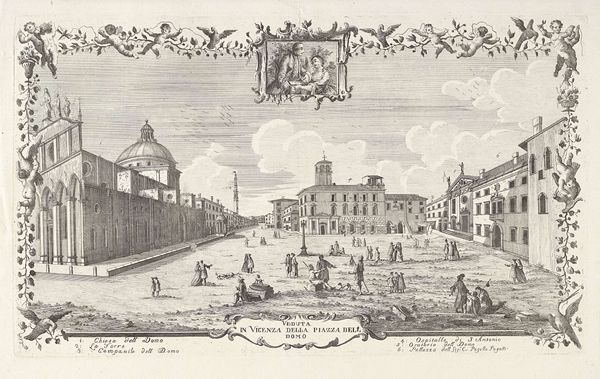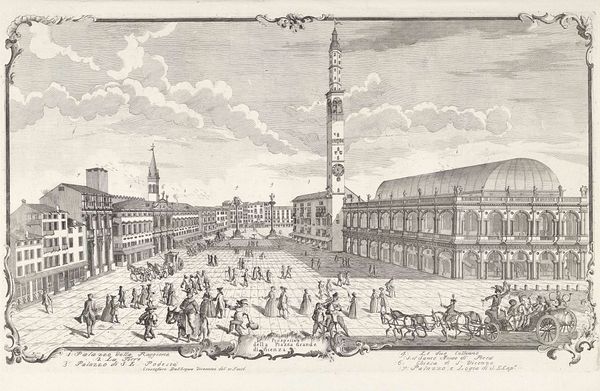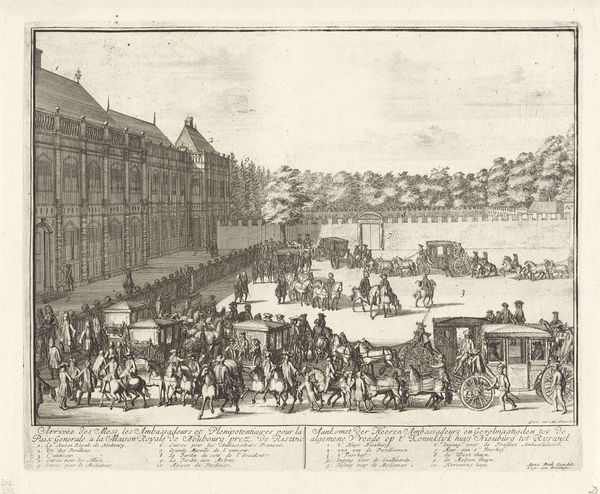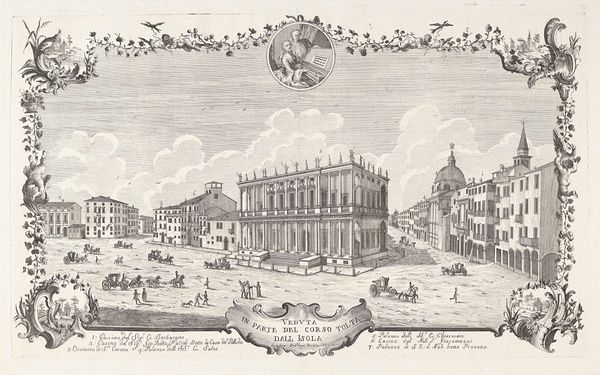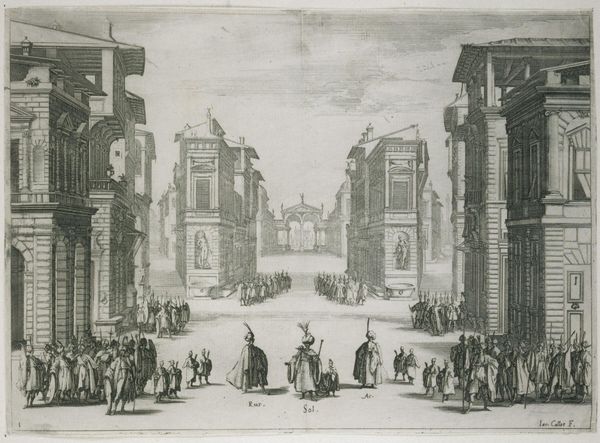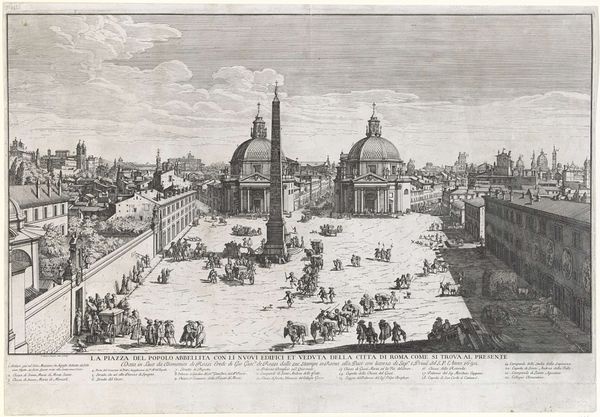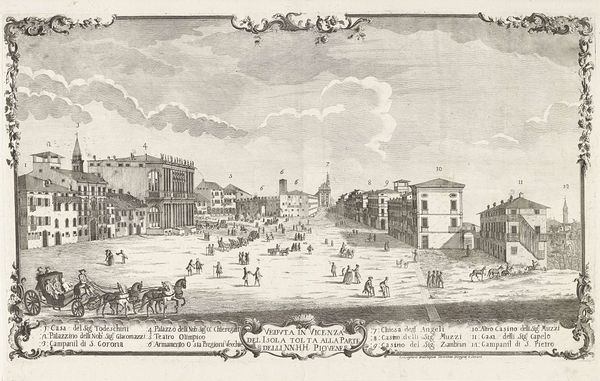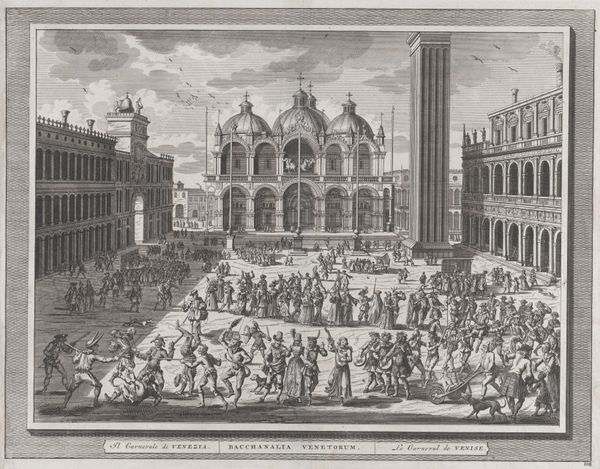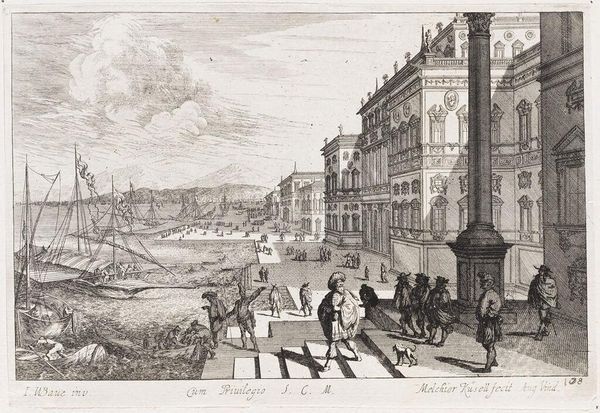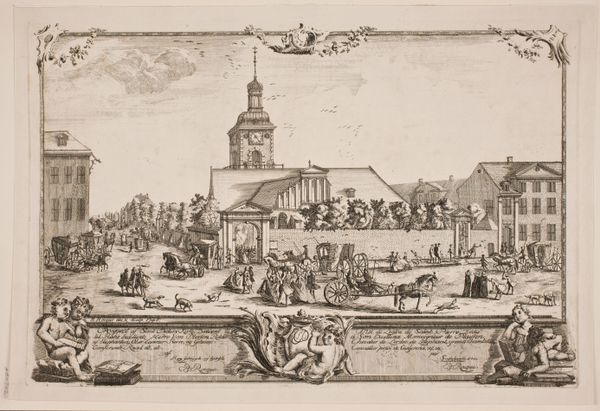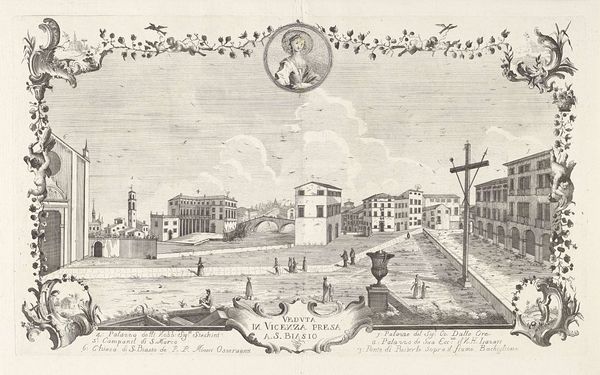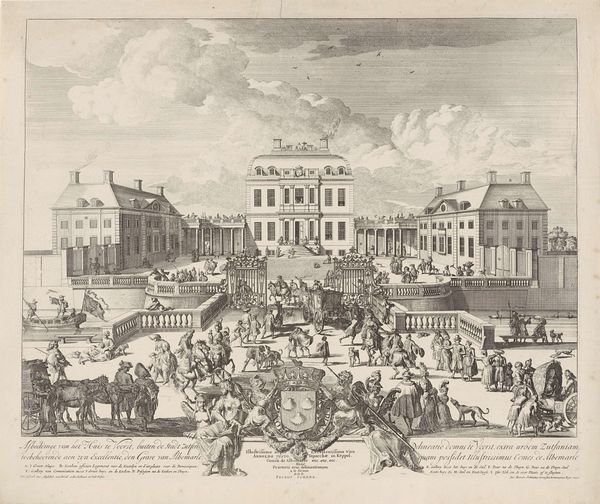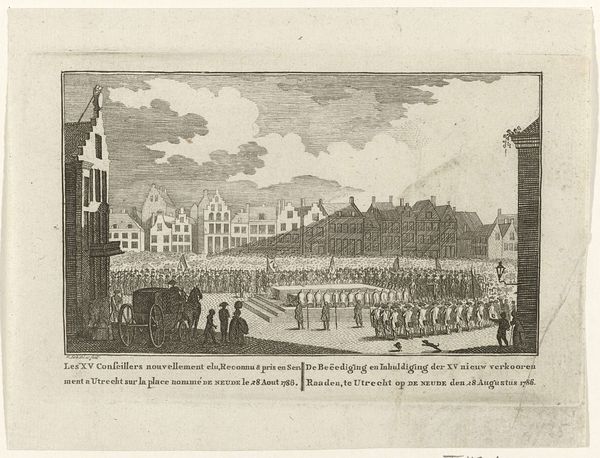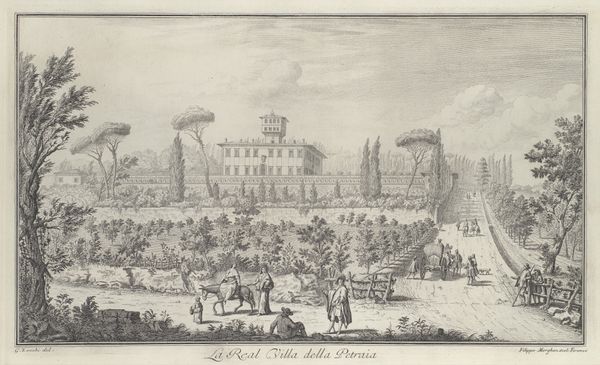
Dimensions: height 359 mm, width 612 mm
Copyright: Rijks Museum: Open Domain
This detailed engraving by Cristoforo dall' Acqua captures the Piazza della Biava and Piazza Grande in Vicenza. Note how the putti intertwine with garlands in the elaborate border, framing the bustling scenes of 18th-century life. These cherubic figures, derived from classical antiquity, were revived during the Renaissance to symbolize divine love and innocence. We see variations of these motifs across centuries, from ancient Roman sarcophagi to Donatello's sculptures, each time adapted to reflect the cultural values of their era. Consider the shifting connotations of the putto: initially, a symbol of sacred love and the soul’s journey. Yet, by the 18th century, it had evolved into a decorative emblem of secular love, often adorning domestic spaces. This metamorphosis reveals how collective memory subtly shapes the interpretation of these symbols, embedding them with layers of meaning that engage us on a subconscious level. These symbols' cyclical progression reminds us how cultural motifs resurface, evolve, and are imbued with new meanings throughout history.
Comments
No comments
Be the first to comment and join the conversation on the ultimate creative platform.
